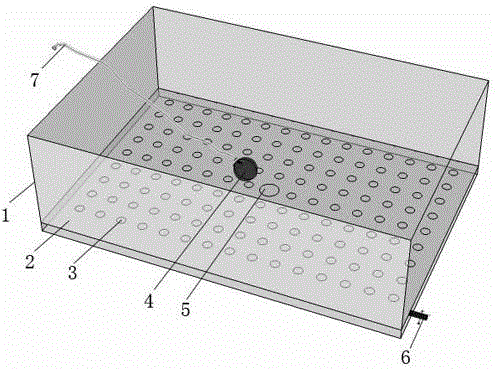Triops sinensis imitating ecological breeding method
A breeding method and a technology of imitating ecology, applied in the field of small crustacean breeding research, can solve problems such as the destruction of the living environment of Limulus sinensis, and achieve the effects of high economic and ecological benefits, simple method and low breeding cost
- Summary
- Abstract
- Description
- Claims
- Application Information
AI Technical Summary
Problems solved by technology
Method used
Image
Examples
Embodiment Construction
[0015] In conjunction with the accompanying drawings of Limulus chinensis breeding box, the present invention will be described in further detail.
[0016] (1) Egg hatching and larva breeding: Add pure water to the hatching container until the water level is 5-7cm high, add 20 grams / square meter of aquatic plants duckweed, 30-40 grams / square meter of plant debris, and add plant debris It is prepared by soaking coconut soil with the culture water replaced when changing the water for 20-30 minutes, and then drying it. When the Limulus sinensis is cultured for the first time, the culture water of Limulus sinensis soaked in coconut soil can be used for the cultivation of well-grown ornamental fish. water instead. Then keep the water level constant, put 1500-2000 eggs / square meter after 10 days, add 50-70 chlorella / ml after the larvae hatch 3 days, add pure water gradually to raise the water level to 10-12cm, every day 3-5 times of feeding crushed special floating bait;
[0017] ...
PUM
 Login to View More
Login to View More Abstract
Description
Claims
Application Information
 Login to View More
Login to View More - R&D
- Intellectual Property
- Life Sciences
- Materials
- Tech Scout
- Unparalleled Data Quality
- Higher Quality Content
- 60% Fewer Hallucinations
Browse by: Latest US Patents, China's latest patents, Technical Efficacy Thesaurus, Application Domain, Technology Topic, Popular Technical Reports.
© 2025 PatSnap. All rights reserved.Legal|Privacy policy|Modern Slavery Act Transparency Statement|Sitemap|About US| Contact US: help@patsnap.com

